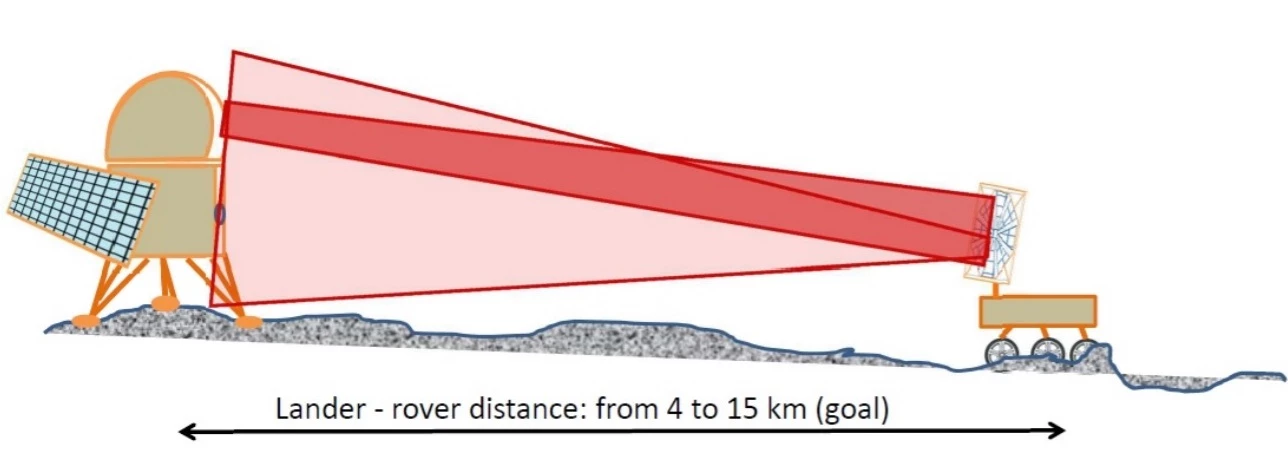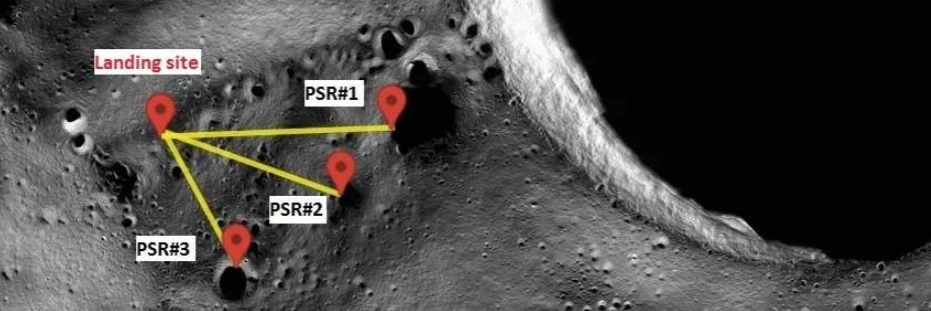Solar power is not just a great energy source on Earth, it can work on the Moon and Mars too. But there are some places that a solar-powered rover just can’t reach, like the Moon’s polar regions that are permanently in shadow. Now, ESA has outlined a new system where a lander shines a laser at a rover to keep it powered from miles away.
Flyovers by several orbiters have revealed that the Moon’s polar regions are home to high amounts of hydrogen, which suggests the presence of water ice. And that’s not entirely surprising – the bottoms of some of these craters never see any direct sunlight, and may not have for billions of years.
That makes these regions an enticing exploration opportunity. But the problem, of course, is that it’s a bit chilly for human astronauts, and even robots might have a hard time, particularly if they’re solar powered. But in a new study, an ESA team has proposed a system to power just such a rover.
The project is known as PHILIP, which is a classically clunky acronym for “Powering rovers by High Intensity Laser Induction on Planets.” And as the name suggests, it would use lasers to power rovers driving around in the dark.
The idea is that a lander and a rover would be sent together, setting down in a sunny spot on the lunar surface. The lander would be equipped with a solar panel, and pass that energy onto the rover by beaming a 500-watt infrared laser towards it.

The rover would have its own version of a solar panel, specially designed to convert that infrared light into electricity to run its systems. Photodiodes lining the edges of the panel would keep it locked onto the laser beam with centimeter-scale accuracy, the team says. This technique would apparently allow the rover to roam as far as 15 km (9.3 mi) away from the lander.
The laser could also be used as a two-way communication system. A modulating retro-reflector on one of the rover’s solar panels could send data encoded into pulses of light back to the lander.
The project even went as far as picking an ideal site on the Moon for this kind of mission – a ridge near Shackleton crater at the lunar south pole. From here, the rover could descend a gentle slope of just 10 degrees and drive to one of three small, permanently-shadowed craters. At distances of 4.6, 5.7 and 7.1 km (2.9, 3.5 and 4.4 mi), all three are within range of the lander’s life-giving laser.

Of course there are alternatives to solar power. Many spacecraft, such as NASA’s Curiosity rover and the upcoming Perseverance, are powered by nuclear reactors, but this doesn’t work in all scenarios.
“The standard suggestion for such a situation is to fit the rover with nuclear-based radioisotope thermoelectric generators,” says Michel Van Winnendael, an ESA robotics engineer. “But this presents problems of complexity, cost and thermal management – the rover could warm up so much that prospecting and analyzing ice samples actually becomes impractical.”
The team says that the PHILIP project is ready for follow-up programs to potentially begin prototyping and testing.
Source: ESA



